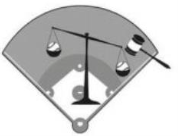The US Court of Appeals for the Federal Circuit affirmed the Trademark Trial & Appeal Board’s cancellation of a registration and dismissal of registrant’s opposition, finding that the cancellation petitioner had priority through a valid assignment of common law rights. Game Plan, Inc. v. Uninterrupted IP, LLC, Case No. 24-1407 (Fed. Cir. Dec. 10, 2025) (Reyna, Prost, Cunningham, JJ.)
Game Plan obtained a federal registration in 2018 for the stylized mark I AM MORE THAN AN ATHLETE. GP GAME PLAN covering charitable fundraising via t-shirt sales. Uninterrupted IP (UNIP) subsequently filed six intent-to-use (ITU) applications for marks incorporating I AM MORE THAN AN ATHLETE and MORE THAN AN ATHLETE for clothing and entertainment services. Game Plan opposed the ITU applications, asserting likelihood of confusion and priority under § 2(d) of the Lanham Act, and claimed common law rights in support of its opposition. UNIP denied any likelihood of confusion and counterclaimed to cancel Game Plan’s registration, asserting priority based on common law rights in MORE THAN AN ATHLETE that UNIP acquired through a 2019 asset purchase agreement (executed after Game Plan filed its Notice of Opposition) from More Than an Athlete (MTAA), which had used the mark since at least 2012, and MTAA’s founder.
The Board dismissed Game Plan’s opposition because it submitted no evidence during its trial period, explaining that Game Plan could not sustain its § 2(d) claims based on common law rights alone. The Board also found that UNIP had acquired valid and enforceable common law rights in the mark from MTAA and its founder and therefore held that UNIP had priority based on the 2019 assignment. Game Plan appealed.
Game Plan argued that the assignment was an invalid “assignment in gross” and violated 15 U.S.C. § 1060(a)(1) and 37 C.F.R. § 2.133(a). The Federal Circuit concluded that the assignment was not in gross because:
- It expressly transferred “all of the goodwill of this business related to” the mark.
- UNIP’s subsequent use was substantially similar to the assignor’s use.
- The assignor remained engaged as a consultant, supporting continuity of goodwill.
The Federal Circuit further held that § 1060(a)(1) did not apply because UNIP did not assign its pending ITU applications. Rather, it received an assignment of existing common law rights to a mark in use. Likewise, the Court found that § 2.133(a) did not bar the Board’s priority determination because the Board relied on UNIP’s independent common law rights, which independently predated Game Plan’s filing date, rather than any amendment to UNIP’s application.
The Federal Circuit also affirmed the Board’s refusal to consider Game Plan’s evidence, noting that Game Plan was advised of the proper procedures for submitting evidence at trial but failed to follow those procedures. Game Plan attempted to rely on materials attached to its motion for summary judgment that were not reintroduced into evidence during the testimony period as required by Board rules. The Court concluded that the Board acted within its discretion to exclude the evidence not submitted during the designated [...]
Continue Reading
read more


 Subscribe
Subscribe



